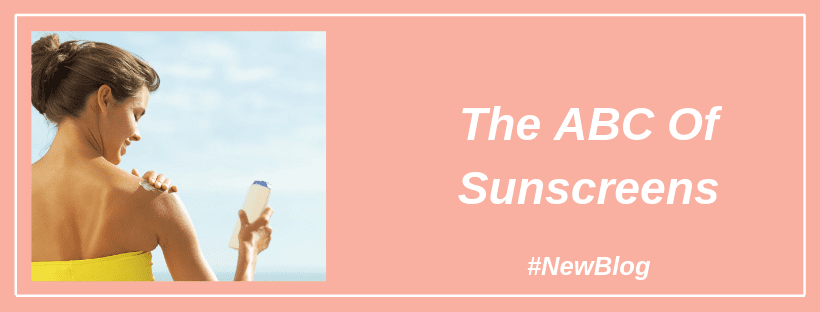You’ve heard this many times but it’s summer so I’m going to say this again. Being consistent with your sunscreen is an important part of your skincare routine. Not only can sun exposure cause redness, itchiness, pigmentation, tanning but is also one of the biggest factors when it comes to ageing. Read on to know more about things to remember when choosing and applying a sunscreen this season.
How To Buy Sunscreen: Check For SPF and PA
More often than not, I find my patients checking the label for the SPF number. As glad as I am to see someone take sun protection seriously, it’s important to understand the labelling a bit better.
https://www.instagram.com/p/BvqxFm_ntYG/
What Is SPF?
SPF or Sun Protection Factor helps you combat the damage by UV-B rays. SPF is literally a measurement of how long you can stay in the sun without causing harm to your skin.
What Is PA Protection?
However, there is another measurement to look for and that is, PA+. PA protection helps guard your skin against pigmentation (notice your arms going brown?) and other signs of ageing caused by UV-A rays. Therefore, when buying a sunscreen, look for both SPF and PA factors on the label.
Types Of Sunscreen
There are 2 types of sunscreens: physical sunscreens and chemical sunscreens. Physical sunscreens are usually composed of zinc oxide or titanium dioxide and make a physical barrier on your skin, leaving a whitish tinge on your skin. Chemical sunscreens have oxybenzone, mexoryl or avobenzone that seep into the skin and help tackle UV damage, they don’t usually have a whitish cast.
https://www.instagram.com/p/BvIxTudnyBc/
How To Choose And Apply A Sunscreen
1. Look for a sunscreen that has at least SPF 30 if not more.
2. When choosing face creams or foundations, it’s an added bonus to have SPF 15.
3. Don’t give up on sunscreen just because you find it sticky. The market now has varying formulas so choose a water-based or gel-based formula if you have oily skin. There are many formulas combined with hydrating ingredients that work just as well as a moisturiser that is great for dry skin.
4. It’s important that you let your skin absorb the sunscreen which is why most dermatologists suggest you apply it 15-20 minutes before you step out directly into the sun.
5. Don’t be stingy when applying sunscreen, use a coin-sized amount just for your face and neck. Use more for arms, legs and back.
6. If you know you’re going to spending your day outdoors for meetings, or in the pool, carry your sunscreen with you. Re-apply it every 3-4 hours.
7. There are many people still under the impression that they can do without using sunscreen during the winter season or on cloudy days. However, it’s crucial to wear a daily broad-spectrum sunscreen all year-round, no matter how cold or overcast the weather is outside the sun’s ultraviolet rays are still active.
I hope you liked this post. If you have any questions,
head to my Instagram profile and send me a DM or a drop a comment below!
